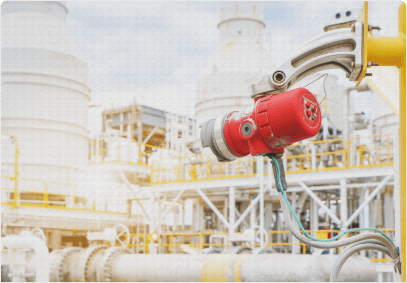9 Simple Techniques For Roar Solutions
9 Simple Techniques For Roar Solutions
Blog Article
Get This Report about Roar Solutions
Table of ContentsThe Ultimate Guide To Roar SolutionsThe Basic Principles Of Roar Solutions Some Known Incorrect Statements About Roar Solutions
In order to shield installments from a prospective explosion an approach of analysing and categorizing a potentially dangerous location is required. The purpose of this is to ensure the correct choice and installation of tools to inevitably protect against an explosion and to guarantee safety and security of life.
(https://www.startus.cc/company/roar-solutions)
No tools ought to be installed where the surface temperature level of the tools is more than the ignition temperature of the provided threat. Below are some usual dust unsafe and their minimum ignition temperature level. Coal Dust 380C 225C Polythene 420C (thaws) Methyl Cellulose 420C 320C Starch 460C 435C Flour 490C 340C Sugar 490C 460C Grain Dust 510C 300C Phenolic Material 530C > 450C Aluminium 590C > 450C PVC 700C > 450C Residue 810C 570C The probability of the danger existing in a concentration high adequate to trigger an ignition will differ from location to location.
In order to identify this risk a setup is separated right into locations of risk relying on the quantity of time the harmful exists. These areas are referred to as Areas. For gases and vapours and dusts and fibers there are 3 areas. Area 0 Area 20 A dangerous atmosphere is very likely to be existing and may be existing for extended periods of time (> 1000 hours annually) or even continuously Zone 1 Zone 21 A dangerous ambience is possible but unlikely to be present for lengthy periods of time (> 10 450 C [842 F] A category of T6 means the minimal ignition temperature is > 85 C [185 F] Dangerous location electrical devices possibly created for use in greater ambient temperatures. This would suggested on the ranking plate e.g. EExe II C T3 Ta + 60C( This means at 60C ambient T3 will certainly not be gone beyond) T1 T1, T2, T3, T4, T5, T6 T2 T2, T3, T4, T5, T6 T3 T3, T4, T5, T6 T4 T4, T5, T6 T5 T5, T6 T6 T6 A T Course ranking of T1 suggests the maximum surface temperature level created by the instrument at 40 C is 450 C. Presuming the associated T Course and Temperature level rating for the tools are suitable for the area, you can constantly use an instrument with a more rigid Division rating than required for the location. There isn't a clear response to this concern. It actually does depend upon the kind of equipment and what fixings require to be lugged out. Devices with certain test treatments that can't be performed in the area in order to achieve/maintain 3rd party ranking. Need to return to the manufacturing facility if it is prior to the equipment's service. Area Repair Work By Authorised Employee: Complex screening might not be called for nevertheless certain procedures may require to be followed in order for the devices to maintain its 3rd party ranking. Authorized employees should be utilized to carry out the work properly Repair work need to be a like for like replacement. New part need to be considered as a straight substitute calling for no special screening of the equipment after the repair work is complete. Each tool with a dangerous rating need to be evaluated independently. These are detailed at a high degree listed below, however, for even more comprehensive info, please refer straight to the standards.
Fascination About Roar Solutions
The equipment register is a detailed data source of tools records that includes a minimum set of fields to determine each thing's area, technological criteria, Ex classification, age, and environmental data. The proportion of Detailed to Shut evaluations will certainly be determined by the Equipment Danger, which is examined based on ignition risk (the likelihood of a source of ignition versus the likelihood of a flammable atmosphere )and the unsafe area category
( Zone 0Area 1, or 2). Applying a robust Risk-Based Evaluation( RBI )strategy is critical for making certain compliance and safety and security in managing Electrical Devices in Hazardous Locations( EEHA).
Roar Solutions Fundamentals Explained

In regards to explosive threat, a harmful location is an atmosphere in which an explosive environment exists (or might be anticipated to be existing) in amounts that call for unique preventative measures for the building and construction, installation and use of devices. hazardous area course. In this article we explore the obstacles dealt with in the workplace, the danger control actions, and the required proficiencies to work safely
These materials can, in certain conditions, develop eruptive atmospheres and these can have major and awful repercussions. Most of us are familiar with the fire triangular get rid of any one of the three aspects and the fire can not happen, however what does this mean in the context of harmful areas?
In the majority of circumstances, we can do little about the degrees of oxygen airborne, yet we can have considerable impact on sources of ignition, as an example electrical devices. Dangerous locations are recorded on the harmful area classification illustration and are recognized on-site by the triangular "EX LOVER" indicator. Here, amongst other key info, areas are divided into three types relying on the risk, the chance and period that an explosive ambience will certainly exist; Area 0 or 20 is deemed one of the most harmful and Area 2 or 22 is my company deemed the least.
Report this page